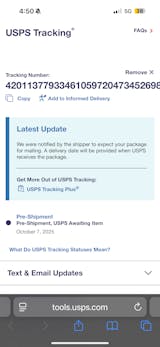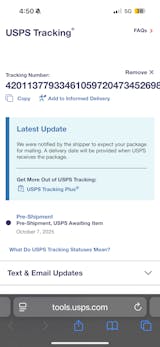Fuel Filters 101 – Keep Your Engine Fed and Protected
Imagine investing thousands into your high-performance engine build—only to have it sputter, run lean, or even suffer internal damage because of a neglected or incorrect fuel filter. It’s a harsh reality that plagues more builders than you might expect. Fuel filters may be small and inexpensive, but they play a critical role in protecting your engine and ensuring consistent performance.
This guide will walk you through the key functions of a fuel filter, help you understand micron ratings, show you how to size your filter for flow, and explain optimal placement for both EFI and carbureted systems.
Why Fuel Filters Matter
At its core, a fuel filter has two main jobs:
- Protect your fuel system by trapping contaminants like rust flakes, dirt, tank debris, and rubber particles that could otherwise clog or damage your injectors or carb jets.
- Maintain fuel flow by allowing your pump to supply adequate fuel volume to the engine under all conditions—from idle to wide-open throttle.
If a filter becomes clogged or was too small to begin with, your engine may struggle to make power, experience fuel pressure drops, or run dangerously lean under load. That can lead to overheating, detonation, or even internal failure. In short: your filter is your first line of defense between the tank and the combustion chamber.
Micron Ratings Explained
Fuel filters are categorized by their micron rating, which refers to the smallest particle size they can effectively trap. One micron is one-millionth of a meter—so when it comes to filtration, smaller numbers mean finer filtering.
- 100 Micron – Coarse: Ideal as a pre-filter, usually located between the fuel tank and the pump. This catches large debris that could jam or damage the pump. Typically uses a stainless mesh element, which is cleanable and high flowing.
- 40 Micron – Medium: Suitable for carbureted systems where fuel pressure is lower and jet passages are larger. Also works as a secondary filter in dual-filter setups.
- 10 Micron (or 5-10 Micron) – Fine: Standard for EFI systems, where injectors have tiny internal screens that clog easily. Must be placed after the pump where fuel is under pressure, so flow through the fine element is efficient.
Inline fuel pumps - you need a Dual Filter Strategy – Protect the pump and your injectors
For inline fuel pump applications, the required practice is a dual-filter strategy:
- Pre-Pump Filter: 100μ stainless mesh element. Positioned before the pump, this protects the pump from ingesting large debris and ensures longevity.
- Post-Pump Filter: 10μ paper or synthetic element. Positioned before the fuel rail or carb, this protects delicate injectors or carburetor circuits from fine contamination.
This split-filter approach allows high flow and high protection without putting a restrictive fine filter on the pump inlet—which could cause cavitation, fuel starvation, or early pump failure.
Filter Size and Fuel Flow rate – Don’t Choke Your Horsepower
Micron rating isn’t the only factor that matters. Surface area and overall filter size dramatically impact flow capability. A filter with a small element can clog quickly or simply lack the area to support high fuel volume.
- A 600 hp engine using gasoline will need a fuel system that supports at least 255 LPH (liters per hour).
- Your fuel filter must match or exceed the flow rating of the pump feeding it. Don’t match a high-flow pump with a mini canister filter.
Larger canister filters often use pleated elements that offer both fine filtration and high surface area—ideal for performance builds. These filters also trap more debris before needing service, offering peace of mind on long pulls or race days.
Best Practices for Filter Placement
- Pre-Pump Filter Location: Mount close to the tank outlet. Keep hose routing short and below fuel level when possible to aid gravity feed and reduce pump strain.
- Post-Pump Filter Location: Mount along the frame rail or in the engine bay. Place it before the fuel rail or regulator, depending on your system layout.
- Clamping: Use secure billet or cushioned clamps. Filters should never hang loosely or rest on vibrating panels. Secure mounting prevents damage from vibration or line fatigue.
- Heat Avoidance: Do not mount filters near exhaust headers or turbo housings. If necessary, add heat shields or insulation to prevent vapor lock or fuel boiling.
- Flow Direction: Most filters are directional—look for an arrow or “IN/OUT” marking. Backwards installation can severely restrict flow.
EFI vs. Carb – Key Differences in Filter Strategy
EFI Systems:
- Operate at 40–60 PSI or higher.
- Require finer filtration (10μ) to protect injectors.
- Typically use a dual-filter setup (100μ pre-pump, 10μ post-pump).
- Must ensure filters are rated for high-pressure use.
Carbureted Systems:
- Operate at 4–7 PSI.
- Less sensitive to fine particles but still benefit from clean fuel.
- Often use a single 40μ filter between the pump and carb.
- High-output carb setups can benefit from 10μ filters, provided the filter is large enough not to restrict flow.
Fuel Filter Maintenance Tips
- Even the best filter can’t do its job forever. Regular maintenance ensures your fuel system stays in top shape.
- Inspect or replace annually, or sooner if using E85, methanol, or race fuels.
- Monitor fuel pressure at idle and under load. A drop could indicate a clogged filter.
- Clean stainless pre-filters using solvent and compressed air.
- Replace paper or synthetic elements as needed—most are not reusable.
- After initial fuel system install, check filters after 300–500 miles. New tanks and hoses often release debris early on.
Corvette-Style Filter/Regulators – A Streamlined Solution
If you're performing an LS swap or want a simplified return-style EFI system, a Corvette-style filter/regulator combo is a great solution. It integrates a 58 PSI regulator and a ~5μ filter into one compact unit, typically mounted near the tank. These are ideal for return less setups and reduce the number of fittings and lines required.
Shop our Corvette-style filter/regulator with AN6 fittings
Conclusion – Don’t Overlook the Little Things
Fuel filters might be small, but their impact is huge. Choosing the right filter—and installing it in the right place with proper flow and maintenance—can mean the difference between a reliable street car and a frustrating driveway project.
- Always use a fuel filter (or two) in any performance system.
- Use a coarse pre-filter (100μ) before your pump, and a fine post-filter (10μ) before your injectors or carb.
- Choose filters sized for your engine’s power and fuel demand.
- Maintain and monitor them regularly—especially when running ethanol or alcohol fuels.
Need Help? Let’s Build It Right.
Hot Rod AN LLC carries a full range of fuel filters, combo regulators, AN fittings, and hose kits to build a complete fuel system. If you’re unsure what setup is best for your engine or swap, our team is happy to help.




0 comments